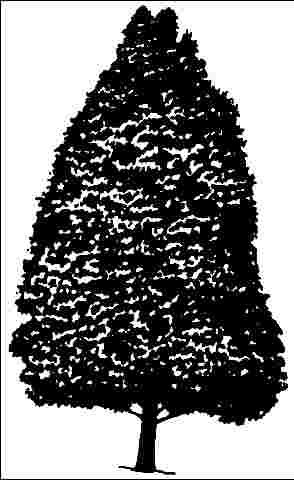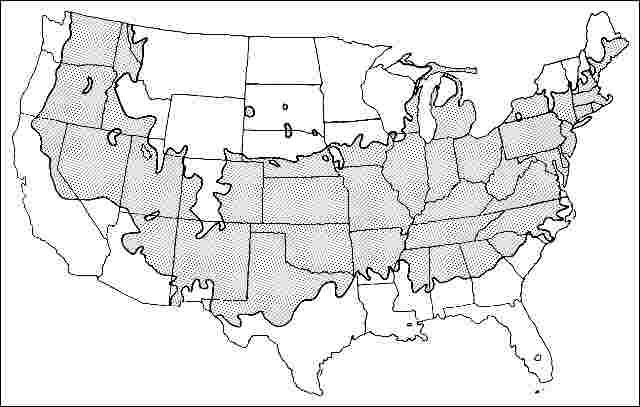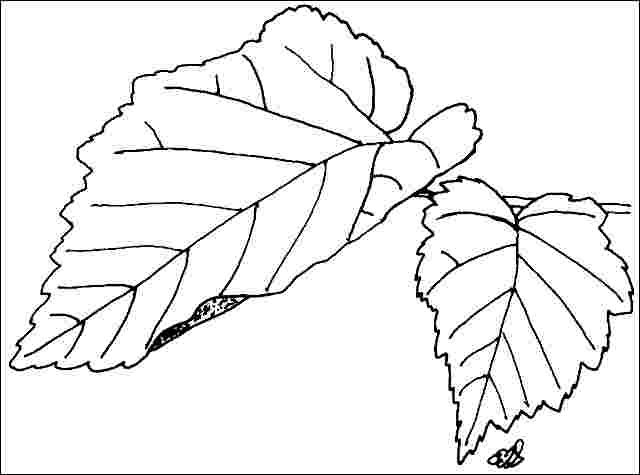Introduction
Turkish Hazel is a 40 to 50-foot-tall, occasionally 80-foot-tall (in its native habitat), deciduous tree with a beautiful pyramidal shape, the thick, tan to grey, short trunk supporting the dense horizontal branches. Growth rate is usually slow. Like many trees with horizontal branches, the main limbs are quite small in diameter in relationship to the typically straight trunk, and arise at almost a 90-degree angle. This should make the tree quite durable in urban areas and helps maintain a symmetrical crown so prized by landscape architects. The lush, dark green leaves are five inches long and stay on the tree long into the fall, finally turning a pale yellow/green before dropping, but fall color is far from striking. Inconspicuous female flowers and two to three-inch-long, attractive male catkins are produced in early spring and are followed by the production of clustered fruits which are quite irresistible to squirrels. On some older trees, the bark becomes ridged and corky, peeling off in sections to expose the orange/brown bark beneath. But this characteristic varies from one tree to the next.

General Information
Scientific name: Corylus colurna
Pronunciation: KOR-ih-lus koe-LER-nuh
Common name(s): Turkish Filbert, Turkish Hazel
Family: Betulaceae
USDA hardiness zones: 5A through 7B (Fig. 2)
Origin: not native to North America
Invasive potential: little invasive potential
Uses: sidewalk cutout (tree pit); street without sidewalk; specimen; parking lot island 100-200 sq ft; parking lot island > 200 sq ft; tree lawn 4-6 feet wide; tree lawn > 6 ft wide; urban tolerant; highway median
Availability: somewhat available, may have to go out of the region to find the tree

Description
Height: 40 to 60 feet
Spread: 25 to 35 feet
Crown uniformity: symmetrical
Crown shape: pyramidal, oval
Crown density: dense
Growth rate: slow
Texture: medium
Foliage
Leaf arrangement: alternate (Fig. 3)
Leaf type: simple
Leaf margin: double serrate
Leaf shape: ovate, obovate
Leaf venation: pinnate
Leaf type and persistence: deciduous
Leaf blade length: 2 to 4 inches, 4 to 8 inches
Leaf color: green
Fall color: yellow
Fall characteristic: not showy

Flower
Flower color: unknown
Flower characteristics: not showy
Fruit
Fruit shape: oval, elongated
Fruit length: .5 to 1 inch, 1 to 3 inches
Fruit covering: dry or hard
Fruit color: brown
Fruit characteristics: attracts birds; showy; fruit/leaves a litter problem
Trunk and Branches
Trunk/bark/branches: branches don't droop; showy; typically one trunk; thorns
Pruning requirement: little required
Breakage: resistant
Current year twig color: gray, brown
Current year twig thickness: thick
Wood specific gravity: unknown
Culture
Light requirement: full sun, partial sun or partial shade
Soil tolerances: clay; sand; loam; alkaline; acidic; well-drained; occasionally wet
Drought tolerance: high
Aerosol salt tolerance: low
Other
Roots: not a problem
Winter interest: yes
Outstanding tree: yes
Ozone sensitivity: tolerant
Verticillium wilt susceptibility: unknown
Pest resistance: free of serious pests and diseases
Use and Management
Turkish Hazel makes a wonderful shade tree since it produces very dense shade, and its narrow crown and ability to withstand air-pollution make it well-suited for use as a street tree in urban areas. It makes a rather formal statement in the landscape due to the tight, consistently-shaped, narrow crown. It is well suited for areas which have restricted overhead horizontal space for lateral branch development. Once the central leader has been properly trained in the nursery, the tree should require little if any pruning or other maintenance once it is established. The nut may be a slight litter problem for some, and considered more unsightly than dangerous. Turkish Hazel is susceptible to Japanese beetles which can defoliate portions of the tree rather quickly but this should not be cause to eliminate this very adaptable tree from your recommended tree list.
Turkish Hazel is an extremely tolerant tree, surviving hot summers, cold winters, wind, drought, and heavy or alkaline soils with ease. Plants should be located in full sun and, like most other trees, watered regularly for several years after transplanting. They are reportedly very difficult to transplant but once established they then become quite drought-tolerant and adaptable. Other trees scorch in summer drought whereas this one will stay green. This tree should enjoy a much wider use than it does now but may need to be grown in containers, or under field conditions which encourage root development inside the root ball, to overcome poor transplant survival.
Propagation is by seed or cuttings.
Pests and Diseases
No pests or diseases are of major concern.